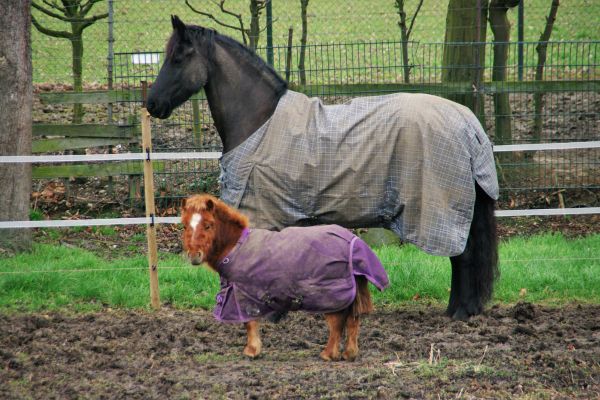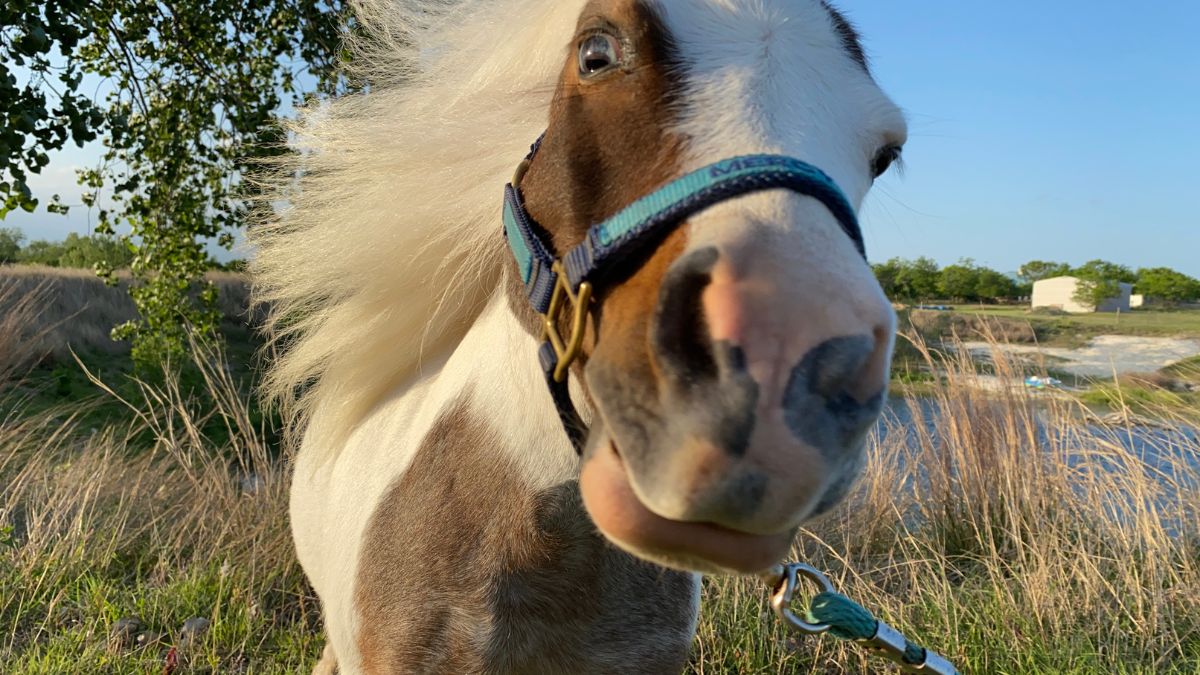How to Raise Miniature Horses: An Intro for Hobbyists
So you’re a fan of horses, but need a scaled-down version. Say hello to mini horses!
Miniature horses are a version of standard stallions that originated in Europe in the 1600s through selective breeding. They are a great option for anyone who is not confident enough to handle a large horse. At the same time, they are not dwarves and have a well-proportioned structure and good intelligence.
The adorable appearance of miniatures has made them favourites with kids. When attached to a cart, they seem to have stepped out from the world of Tolkien. Miniature horses are one of the fastest-growing breeds in Australia and are being used for show purposes, racing, and therapy.
If you are wondering how to raise miniature horses on your hobby farm or even do it as a full-time job, then keep reading. We will discuss the smallest horse breed in the world, including a few grooming tips.
How Small Are Miniature Horses Really?

If you’ve never seen one in person, the answer is: smaller than you think!
The average height of a miniature horse is around 87 cm or less and their coat colours vary. In general, they have a thicker coat than standard horses. Their weight can vary between 70 and 160 kg.
While they match a larger dog (though nowhere near a Great Dane!) in size, their physical proportions are similar to full-size light breeds. Miniatures have angled shoulders, well-formed forearms, large eyes, and small but pointy ears. They have a muscular build along with impressive agility.
The Miniature Horse Association of Australia mentions that in appearance, a miniature horse should give the scaled-down impression of a full-size horse. The association also provides specific measurements to ensure a standard of excellence for these horses.
While the miniatures are not expected to be athletic like larger horses, they have enough strength to work as cart horses. No wonder the minis were used in some coal mines in the past century for hauling loads. Minis live longer than full-sized horses and have an average lifespan between 25 to 35 years.
These horses are intuitive and have a gentle nature which makes them an excellent choice as pets. Generally, the miniature mares stand out with their refinement, while the males are bolder. They are also curious and enjoy being around people. That said, miniatures can also be clever escape artists and can sneak out through fences that are too high or too low.
Note that many people consider miniature horses and ponies the same. However, this is not true as ponies are bigger than miniatures and cost more. A pony can be around 140 cm or more in height, with a stockier build and a thicker coat.
In recent years, miniature horses have become more mainstream than ponies and a few have attained celebrity status. For example, Patrick the Mini Horse is a breed ambassador and has a larger Instagram fan base than many people do!
7 Points to Consider Before Buying an Australian Miniature Horse
If you are planning to buy a miniature pony, there are a few things to keep in mind.
- Firstly, if you are not sure what to check in a miniature horse, it is best to seek advice from someone knowledgeable. They aren’t cheap! A foal of a mini will set you back by at least $500, often much more than that.
- Choose a registered and recommended breeder and make sure to check the history, health, and temperament of the horse before buying. Keeping track of the pedigree will help in identifying any genetic health issues. For this reason, buying unregistered minis is not a good option.
- Keep in mind that horses are herd animals. So it’s best to start by buying a pair. However, most miniature horse owners will tell you that these horses are addictive. You can’t stop owning just a pair of them in your collection. To start with, it is best to buy older minis around 2-3 years of age. Picking horses with some ground manners will make it easy for you.
- While minis may look like a dog, they need care and training just like their larger cousins. They will need space to move and roll. So, the more space you can give them, the better.
- Proper exercise and proper training are important for the minis. You need to have a regular training schedule to teach them the basic skills and the right manners.
- Check the minimum standard for care and housing for keeping horses in your area. There can be guidelines related to the metres squared, stables, paddocks, and waste disposal.
- Experts advise proceeding with caution while introducing miniatures to other pets. Full-sized horses can injure minis. But a mischievous mini could also injure a dog!
How Much Does It Cost to Raise a Mini Horse?

Depending on their breed, the prices of miniature horses can vary. You can pick one for $1,000 or less, while another with a higher class and excellent showmanship records might cost $50,000.
But the cost per animal isn’t the only thing you need to reckon with.
You will need sufficient space for the horses and set up the fencing to provide safety. As a rule of thumb, around 4,000 square metres or an acre of open land should be good enough for 2-3 mini horses. Fencing is also needed to restrict their access to grass and control their grass intake. (For that, an electric fence could be an option.)
A three-sided roofed shelter like a barn, that is sufficiently ventilated, can act as a shelter. In addition, you may need a conventional horse trailer for transporting the horses. A pickup truck or a van with an enclosed bed can also be used.
Ready access to fresh water is also needed for miniatures. Ideally, you should arrange for warm water in very cold conditions and vice versa, to ensure a steady water intake.
Miniature horses consume less food than standard horses and their forage includes grass or hay. While they need a green pasture to graze around, miniatures will easily overeat and gain too much weight. So, providing small meals at frequent intervals is the key. You can use the Henneke Horse Body Condition Scoring System to check their body fat and adjust the diet accordingly.
An average miniature consumes around 1.5-2.5 kg of forage in a day. Keep an eye on the quality of hay, and add some grains to ensure sufficient nutrient intake. The horses will also need some salt as a part of their diet.
Coming to grooming requirements, proper brushing is a regular need to keep their coats healthy. A thorough washing should be given after every 2-3 weeks. You will also need to find a qualified farrier as the horses, like cows, need hoof trimming.
Since minis suffer from various health issues, the service of an experienced vet will be a must. The medical care needed for minis tends to be different than their larger counterparts.
The special size of the minis is a result of selective inbreeding for more than 300 years. On one hand, the small size provides them with the ability to endure medical crises that larger horses do not possess. On the other hand, this makes them vulnerable to diseases like hyperlipemia and eclampsia. Moreover, some problems can advance quickly in these horses.
In general, you need to do three things right to keep them healthy. These are not confining them to small spaces, preventing obesity, and not treating them like pet dogs.
A common problem with these horses is health complications related to dwarfism mutations. Beyond that, they can suffer from obesity, dental problems, Cushing’s Disease, and colic. Frequent checkups are essential to keep the horses healthy. Other veterinary costs include annual vaccinations, deworming, and teeth floating.
In addition, difficult births are more common in miniatures than in larger breeds. If you are planning to breed miniatures, ensure close monitoring during the last trimester.
How to Train a Mini Horse
While minis are easier to train, they will still need a lot of effort and patience from your end. Besides, training also involved bonding with the horses through positive reinforcement techniques.
Like their bigger counterparts, they can be stubborn and tricky to train. Some trainers claim they are even tricker! One thing is certain: even though they are cute, they command respect and will go out of their way to challenge you at every opportunity.
Then again, miniature horses are intelligent, athletic, and highly responsive to body language and facial expressions. This can make the process of training a fun activity. The same techniques that are used on larger horses, including fundamental groundwork, can be used on minis to gain control. Moreover, minis are quick to take on a challenge, which can test the abilities of a trainer in some scenarios.
Many owners suggest that miniatures have a great sense of fairness. So, rewarding them with positive words and praise is a good way to keep them motivated. While some owners use food as a reward, it is best to use it responsibly and selectively. Make sure to keep the training pattern, as well as the rewards, consistent for the best results.
How to Monetise a Mini Horse Farm
Breeding mini horses is not simple as it will take a few years to have reasonably groomed young horses ready for sale. That means you will need to spend loads of time and money to cover the initial expenses and then make enough sales to break even. In other words, this may not be the best option for every farm owner.
The other option is to generate revenue through training and showing. Minis can compete in special events and are excellent choices as therapy or guide animals. Since minis have a longer lifespan than dogs, they are a great alternative to canine pets.
Take the example of Moet, a therapy mini horse who is a regular at aged care community centres. According to their social group coordinator Monika Lyckholm, this beautiful girl does wonders calming and comforting her clients.
“Therapy animals are so important to clients, helping significantly to persuade them out of their comfort zone to enjoy something new – giving them confidence that they may not have had prior,” Lyckholm observed.
Many aged care community services have started using miniature horses to provide support to their members. Most miniatures reach up to the hips of adult humans and have a well-built body. This makes them a great service animal for anyone with visual disability or mobility issues. While such services are a great way to monetise the farm, miniatures need special training to act effectively as service animals.
Conclusion
Hope this answers the basics of how to raise miniature horses!
Whether you are planning to start a farm or buy them as pets, miniature horses are a joy to have around. While they are small, do not consider them easy to handle like other pets. Owning miniature horses involves a lot of work as well as patience. At the same time, you should be ready to manage the necessary expenses.
If you are not sure of where to start with minis, reach out to a veteran who can offer guidance. We suggest that you go through all the details and decide whether you are up to the task of raising miniature horses.
In case you are ready to handle the challenge, chances are you will convert into a mini aficionado before you know it!

